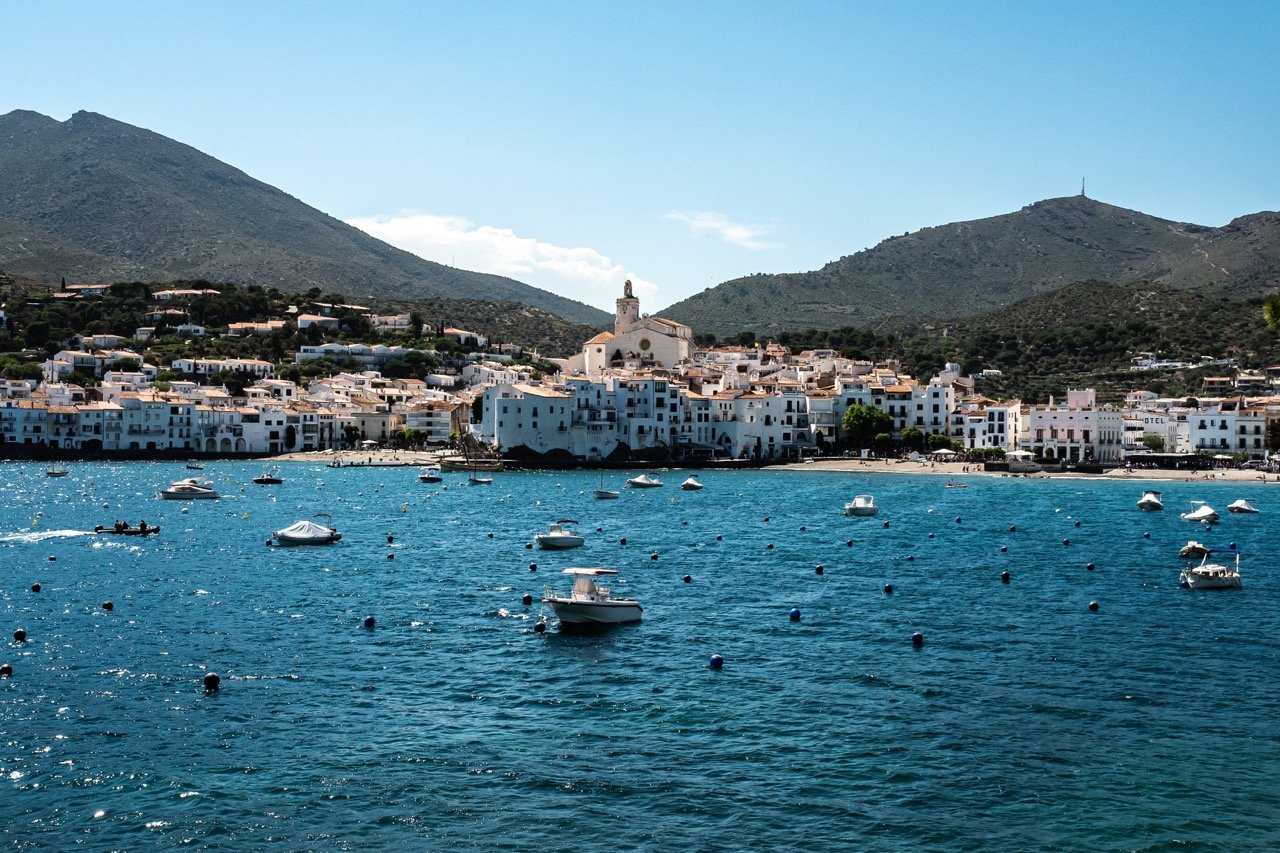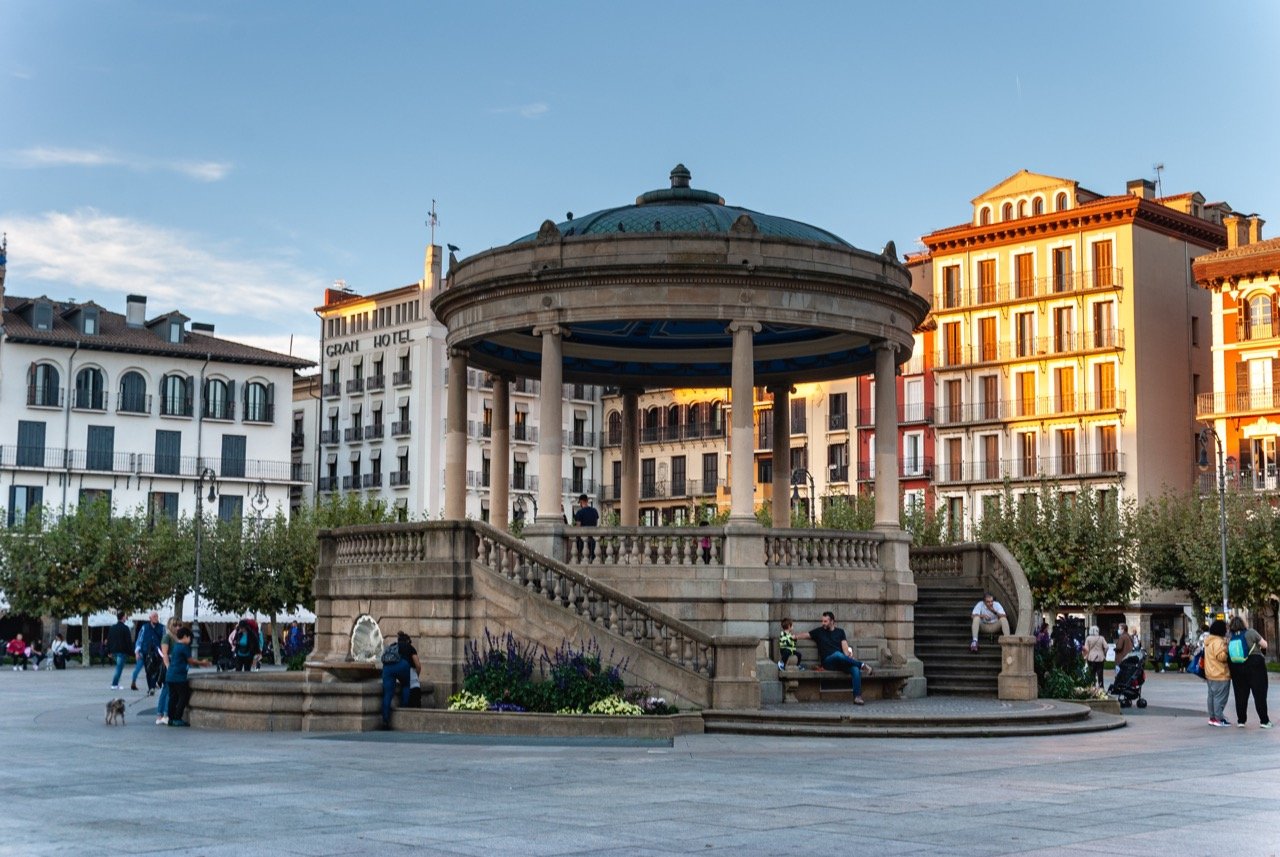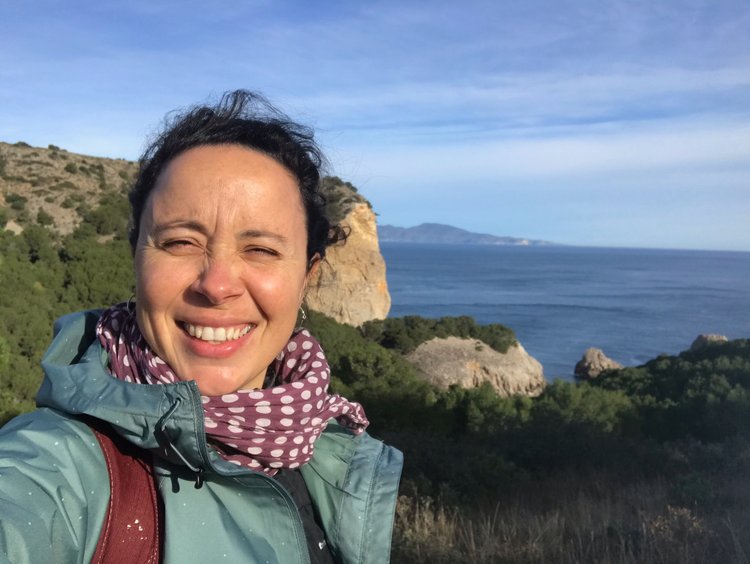Guide to Visiting Pamplona, Spain
Affiliate disclosure: some of the links in this article are affiliate links. If you book using one of them, we’ll earn a small commission. All of our info is free to read and free of ads, so we appreciate it!
Modest in size it may be, but Pamplona - Iruña in the Basque language - punches above its weight. And the city’s 200,000 inhabitants are fiercely proud of the city’s worldwide reputation. Pamplona is the regional capital and also its largest city.
Although most people have heard of Pamplona only in relation to the famous San Fermín festival, and winced perhaps at videos of brave (or maybe foolish?) young men being chased and gored during the city’s nine days of bull-running mayhem, there’s much more to the city.
Given the vast majority of visitors come only during the 9-day festival, you’d be forgiven for asking whether Pamplona is worth visiting during the rest of the year. But the answer is an empathic ‘yes’!
With a rich and often troubled history, a lively bar scene, a large student population, a constant procession of pilgrims passing through, and ample green spaces, Pamplona is always worth a visit. And should you get tired of the city, Navarre’s stunning natural places offer great day trip opportunities.
See more of our Spain travel guides:
Table of Contents
Plan your itinerary with local help
If you could use some help coming up with a great plan for your visit to Pamplona (and Spain more broadly), schedule a Spain travel consultation with Alfonso, our Local Expert in the Basque Country!
These are one-hour Zoom calls where you’ll get to chat with Alfonso about the trip you’re planning and he’ll share his tips and advice, answer your travel questions, and help you perfect your itinerary.
Why visit
Outside of the running of the bulls, Pamplona is probably best known for its association with the American writer, Ernest Hemingway. Hemingway visited here nine times, reveling in the festivals and enjoying the company of bullfighters.
His writings inked Pamplona onto the global map and the city has thanked him with a bust that stands at the entrance to the city’s bullring and a statue that lurks inside the ornate Café Iruna (see below), one of his drinking-dens. But the connection with Hemingway is far from the only reason to come.
Navarre was once an independent kingdom, and Pamplona its royal capital. This regal and important history can be seen in the city’s grand architecture and pleasant boulevards. While no longer a major city, Pamplona is still filled with atmospheric streets, imperious churches, grand monuments, lively bars, and chic restaurants, all guaranteeing that there’s plenty here to entertain you.
And for those looking for a little nightlife, Pamplona’s movida is boisterous, the city’s students keeping the bars open late and energy levels high.
The food in Pamplona is also exquisite. The city enjoys a pivotal location between the Basque-speaking valleys of Navarre’s north, and the vineyards, olive groves, crop fields, and even desert landscapes of the south.
This prime location means that visitors are treated to some of the finest Basque culinary skills, with tasty pintxos (tapas) tempting you on every corner well before you sit down to dinner. And once it is time for a full meal, diners can choose from top quality meat, fish, and vegetables, accompanied by fine wines coming from Navarre’s middle zone and southern flatlands.
Where is Pamplona
Pamplona sits centrally within the region of Navarre, in Northern Spain. It’s about equidistant from both Barcelona and Madrid (4 hours) and is near to the cities of Bilbao, San Sebastían, and Zaragoza.
The region of Navarre is a major wine-producing area and some of Spain’s finest vintages are cultivated here. While much more verdant than Spain’s arid interior, Navarre and Pamplona lie in a sort of transition zone.
Only an hour from the coast and 30 kms south of the Pyrenees mountains, to Pamplona’s north the terrain is mountainous, wet, and verdant, while to the south drier plains unfold.
Firmly inland, the city’s only major waterway is the modest Arga river, a tributary of mightier rivers which eventually flow into the Mediterranean Sea.
How to get here
Visitors to Pamplona rarely arrive by air, as the city’s airport receives just a few flights from Madrid and almost nowhere else.
Train
Frequent trains connect Pamplona to Madrid, with travel times of three to five hours and ticket costs of €25-60. Barcelona is four or five hours by train, and tickets cost €35-60. The nearby regional hub of San Sebastián is two hours by rail (€16-25) and the Basque capital of Vitoria-Gasteiz just one hour away (€6-10).
Bus
Regular, cheap and reliable buses to San Sebastián take an hour (€9.20), and Madrid is six hours away (€25). Bus is the best public transport choice if you’re going to or coming from Bilbao, taking two hours and costing just under €10.
Where to buy train & bus tickets
I always recommend booking your public transport tickets directly with the service provider. However, the website/app Omio is also a nice option. It’s an aggregator that shows options for public transport routes all over the world. When you do a search, you’ll be able to see all your options for trains, buses, flights, and even ferries along with a host of different companies that provide the services.
Comparing prices is easy, the site has a great design, and you can keep all your bookings in one place. It costs a little bit more than booking direct, but it’s really convenient.
Renting a car/driving
Regular, cheap and reliable buses to San Sebastián take an hour (€9.20), and Madrid is six hours away (€25). Bus is the best public transport choice if you’re going to or coming from Bilbao, taking two hours and costing just under €10.
Where to find a car rental
All the big rental companies have offices throughout Spain and you also have many local agencies. All decent-sized cities have agencies, so you’ll always have plenty of options.
To check prices and book, I always recommend having a look at DiscoverCars. It’s a car rental website that includes offerings from all the major international rental companies as well as lots of smaller local agencies, which often have much better pricing. You can often find great deals.


Best time to visit
The best months to visit Pamplona are May, June and September, when average temperatures range between 20 and 24 C (68-75 F), providing perfect conditions for sightseeing and outdoor activities.
But before deciding when to come, you really must ask yourself: do you want to party? If you answer ‘yes,’ then you should plunge yourself into the joyful chaos of the San Fermín festival that begins annually on July 6th. If you answer ‘no,’ then you’d be wise to avoid those same dates!
If you plan to visit during San Fermín, know that hotels, restaurants, and all sorts of tour and service providers raise their prices during this time. And the crowds will be intense – the huge throngs of fiesta-lovers, all dressed in white, can be quite intimidating for some. And with a fair amount of excess drinking taking place, the city can get rowdy and even a little bit dangerous, regardless of whether you run with the bulls
How long to spend
Pamplona is compact and flat, meaning that two days are enough to savor the best of the city. While you could visit in just a day, you’d be very rushed.
With two days, you can leisurely visit the city’s citadel and interpretation center, the Catedral de Santa Maria cathedral and its Occidens museum, and spend your evenings stuffing yourself on pintxos. You might even have time for a half-day excursion out into the Navarre countryside.
Where to stay
When visiting Pamplona, it’s best to choose a hotel near to the city’s main square, the Plaza del Castillo. You have a wide range of accommodation options, at very reasonable prices, all within walking distance of the square, and its central location means that you’ll always be close to wherever you want to go.
While prices are reasonable throughout most of the year, this changes dramatically during the San Fermín festival. For those frenzied nine days in July, you’ll need deep pockets and a hotel booking made up to twelve months ahead of your arrival!
Here are my recommended hotels:
Gran Hotel la Perla - If your budget permits, the Gran Hotel la Perla (around €250), a five-star hotel occupying a corner of the main square, is the go-to choice. At times its guests have included actual royalty (King Juan Carlos I) and screen royalty (Charlie Chaplin, Woody Allen). Nevertheless, it is ‘Papa’ Hemingway (yes, him again) with whom this building is best associated. He booked his wife in here, while he partied around town with his friends!
Hotel Maisonnave - Slick, elegant and central, the four-star, family-run Hotel Maisonnave (€160) enjoys views over the city and towards the distant mountains. Comfort levels are high and facilities comprehensive, with a relaxing bar, small gym and sauna.
Hotel Yoldi - Hemingway was fascinated by the company of bullfighters, who spent time socialising with him at the Hotel Yoldi (€130). Nowadays, there are no matadors in the lobby, but it remains a good-standard, central establishment, which features a lively café.

What to see & do
1. Mercado de Santo Domingo & Mercado del Ensanche
Confession time - I simply love food markets, so I always recommend them! Pamplona has two, the Mercado de Santo Domingo and the Mercado del Ensanche.
Both markets feature tempting displays of fresh fruit, vegetables and fish. Although the Mercado de Santo Domingo is more central, it’s only a ten-minute walk from the Plaza del Castillo to the high-ceilinged Mercado del Ensanche. While browsing, do treat yourself to some nutty, Idiazabal or Roncal cheese, from Navarre’s northern valleys.
2. Ciudadela (Citadel)
Poor old Pamplona has certainly suffered some batterings by various invaders across the centuries, but this star-shaped bastion was only built in the 17th century. Nowadays it enjoys a much more peaceful life. Its sturdy buildings are used by local artists as exhibition spaces, and positioned in t
Basque and Spanish masters. Free admission makes this the perfect place to bring your picnic.
To discover more about Pamplona’s history and fortifications, do visit the Fortín de San Bartolomé Learning Centre, where a series of short films explain the city’s development better than a traditional dusty old museum.
Ciudadela de Pamplona
3. Plaza del Castillo
While the citadel is in good condition, there is nothing left of the city’s castle which once occupied this square, and which gave it its name. But every visitor will cross this wide, open space during their stay, probably several times. It’s the perfect meeting-point for families, friends and lovers, and it also features a few curiosities.
At its southern end, take a close look at the walls of the Navarre Government building, identifying bullet holes left by Spanish Civil War skirmishes in the 1930s.
The famous Café Iruna sits across the square, as does the elegant Gran Hotel la Perla, while the plaza’s eastern side is full of less famous pavement cafes, all competing for business.
Plaza del Castillo
4. Catedral de Pamplona and Occidens museum
The prominent twin towers of the city’s main place of worship, with its neoclassical façade, prompted the French writer Victor Hugo to call Pamplona’s cathedral ‘a beautiful lady … with donkey ears.’ A little harsh, perhaps – see if you agree with him!
On the same site as the cathedral, do follow the displays of religious art in the Occidens museum. Even if such exhibits are not normally ‘your thing’, the contemplative consideration of Christianity’s age-old challenges across the centuries is quite intriguing.
5. Museo Universidad de Navarra (University of Navarre Museum)
South of the city centre, the works of global names such as Picasso and Kandinski rub shoulders here with creations of local luminaries like Chillida and Oteiza, two legends of sculpture. As well as the permanent exhibitions, a programme of temporary events showcases innovative works of art and photography.
Museo Universidad de Navarra. Photo: Mika58, CC BY-SA 4.0, via Wikimedia Commons
6. Be a (temporary) pilgrim
The famous, ancient pilgrimage route, the Camino de Santiago, begins in the Pyrenees and reaches Pamplona after a few days of walking. Each year, thousands of walkers from across the world pause for a night in Navarre’s capital, bringing a unique energy and ambience to the city.
Join the route as it snakes its way through town, and who knows? Once you get swept up in the camino experience, it’s hard to shake off. I would know - I have now walked over 3,000 kilometers of pilgrimages!
The Navarre countryside
7. The Festival of San Fermín and its bull-runnings
It is impossible to write a list of ‘things to do’ for Pamplona without referencing its best-known attraction. Even though it occupies only nine days, it creates a never-ending buzz. The souvenir shops are always full of bull-related trinkets, and a digital clock on Calle Estafeta counts down the days, hours and minutes until the next San Fermín begins.
Over a million people throng the streets during festival each year, most of them dressed in white with a red bandana and sash. If you have the stamina, the bars will welcome you all-night long. There’s music, there’s dancing…be in no doubt, this is one of the world’s biggest festivals, all in honour of the martyr, San Fermín, decapitated by his own father for converting to Christianity.
Activities during the San Fermin festival
8. Escape the city on a day trip
Just as Paris is not France, and Madrid is not Spain, nor is Pamplona totally representative of Navarre and its natural wonders. If you have time and are visiting the city with your own car, two short day trips will reward you.
Just thirty minutes east of the city, the gorges of Lumbier and Arbayún are jaw-droppingly spectacular, with 200 metres of plunging cliff faces and soaring birds of prey.
To see a sparse, desert landscape, head south to the Bardenas Reales, a sort of Badlands that has Arizona-style rock pinnacles and lunar formations. It’s an hour’s drive from Pamplona.
Rock formations in the Bardenas Reales desert near to Pamplona
9. Explore the city’s parks
Pamplona claims to have the most green space per inhabitant of any Spanish city. There are certainly many lovely, leafy spots, including the beautiful Jardines de la Taconera, which is favored by herds of deer and strutting peacocks.
And the twinning of Pamplona with the city of Yamaguchi in Japan gave birth to the Japanese-themed Parque Yamaguchi, designed by Japanese landscapers, which features plant species from the Far East.
Yamaguchi park
10. Museo de Navarra (Museum of Navarre)
Set in an imposing former hospital, the city’s principal museum leads you through local history from prehistory to the Roman period, then onwards right up to the modern era. Local art is also featured, but arguably the showstopper is the Mapa de Abauntz, a map carved from stone over 12,000 years ago.
Museo de Navarra. Photo: Zarateman, CC BY-SA 4.0, via Wikimedia Commons
Restaurants and dining
Cafe Iruña. Photo: Amikosik, CC BY-SA 4.0, via Wikimedia Commons
Food in Pamplona is heavily influenced by the Basque cuisine to the north, guaranteeing that mealtimes here rarely disappoint.
The culture of tapas (though here they are called pintxos) is strong in the city and visitors could simply bar-hop, enjoying a mouth-sized bite in each bar they visit. For me, I love this grazing, and am quite happy to spend an evening without a sit-down meal. Whether you want to nibble your way around town, or enjoy a more traditional meal, here are some recommendations.
If you decide to stick to pintxos, then start your journey in Calle San Nicolás, where you’re truly spoilt for choice. While you eat, keep in mind that it’s easy to get comfortable at one bar (and have a great evening) and spend the entire night there. But the essence of pintxos is to keep moving, so don’t stay too long at any one place!
La Mandarra de la Ramos
This is one of my absolute favorite spots on Calle San Nicolas. It oozes atmosphere, displays a great pintxos selection, and also offers the possibility of full meals.
Café Roch
Just around the corner from La Mandarra de la Ramos is one of Pamplona’s oldest pintxo bars. When you arrive, squeeze yourself into a tiny spot and get ready to feast on their freshly cooked fritos, croquette-style delights stuffed with prawns, peppers and much more.
Café Iruña
A meal here is a rite-of-passage, not especially for its food but rather for its history and stunning interior décor.
Bar Gaucho
This spot deserves to be on everyone’s bar-crawl list, with its elaborate pintxos having scooped up endless awards during the past 50 years. Why not start with one of their top creations, the huevo trufado (truffled egg)?
Rodero
If you’re looking for something more substantial than pintxos (and your budget permits), swanky Rodero serves fabulous full meals at Michelin-star standards. While it’s no bargain, a meal here won’t break the bank either.
La Fogoneta Culibar
One of my current favorites has to be this husband-and-wife-run joint. The kitchen here happily and skilfully churns out dishes crafted from local, Navarrese produce at very fair prices.
Gurgur shop
If you’re looking for gastronomic souvenirs, then a visit to the Gurgur shop could answer all your questions. Dense Pamplona chorizos, fine hams and cheeses, jams and honey and a shopful more will surely please you and your loved ones. A bottle of patxarán, the typical Navarre liqueur, is another great gift choice.



Connect with Alfonso




























